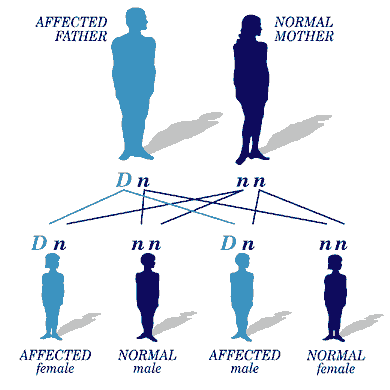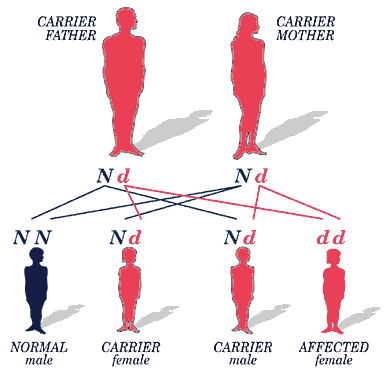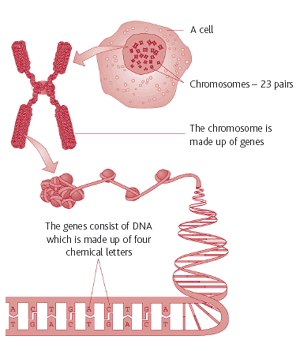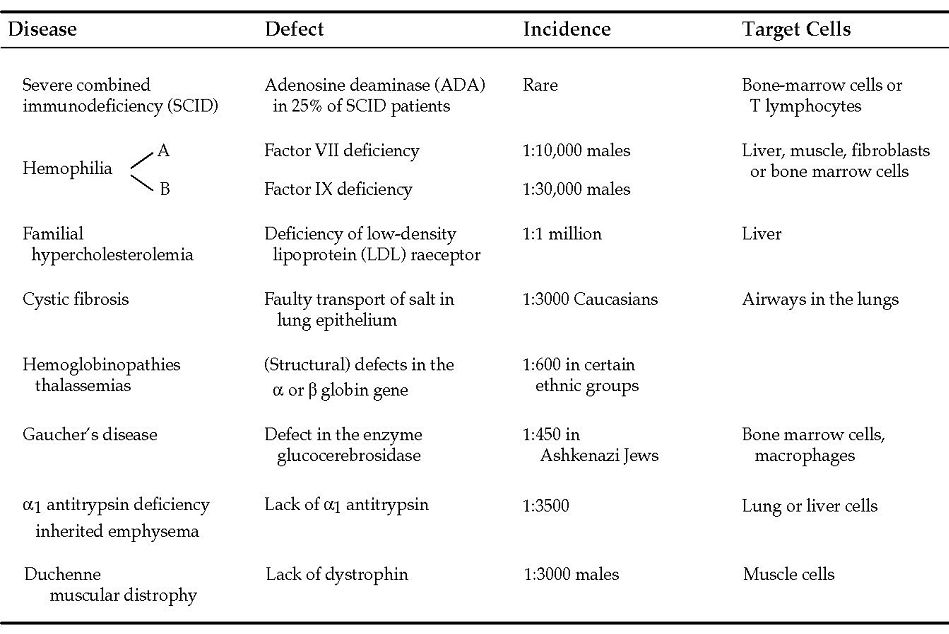Genes: To understand what Gene Therapy is and its purpose, it is crucial to have an understanding of what genes themselves are. DNA, though it is made up of only four basic components, it holds a vital role in our lives. Genes, masses of DNA, are the building blocks of life, responsible for storing information vital to the development and maintenance of an organism's cells and structure. Passed from parent to child, they are responsible for the genetic traits and appearance of the offspring. Genes also code for proteins which are some of the most important molecules in the body, in charge of most life functions. Genetic Disorders: Gene therapy is used to help treat genetic disorders that are caused by malfunctions on the genomic level. A genetic disorder is one that is caused by an error in a person's genetic makeup. Because human DNA is composed of billions of base pairs ( 3 billion to be exact), and a mistake in one base pair can severely alter the protein in formation, there are currently many known genetic disorders. Genetic disorders vary both in severity and type. These types include Chromosomal, Mitochondrial, Single Gene, and Multifactorial. Chromosomal: Chromosomes are thread like strands made up of DNA and proteins, that are located in the nucleus of a cell. Chromosomes hold genetic information, so any malformation in their structures, including breaks, trans-locations, deletions, or duplications, can result in a genetic disorder. By microscopic examination, some of these malformations can be diagnosed. An example of a chromosomal genetic disorder is Down syndrome, which is caused by a malformation of chromosome 21 (three duplications).
Mitochondrial: Mitochondrial genetic disorders are quite rare. Mitochondria work as the powerhouse of the cell, making and supplying energy for cellular functions. Mitochondrion contain approximately 5-10 circular pieces of mitochondrial DNA. Mutations in this non-chromosomal DNA of mitochondrion, cause these uncommon genetic disorders. Single Gene: This type of genetic disorder occurs as a result of mutations in the DNA sequence of a gene. Since genes code for proteins, a malformation of the DNA sequence can cause devastating consequences in protein formation. Because these malformations alter protein production and therefore overall function of a cellular structure, disorders generally result. Currently, over 6,000 single-gene disorders are known. They occur in about 1 every 200 births. Theses include sickle cell anemia, Huntington's disease, and cystic fibrosis. Single-gene disorders are generally inherited autosomal dominantly (shown below in blue figure), autosomal recessively (shown below in pink figure), or through x-linked inheritance (defective gene on the x-linked sex chromosome). Multifactorial: This type of genetic disorder is caused by both mutations in multiple genes and environmental factors. An example of this is breast cancer which has been influenced by mutations on multiple chromosomes, including 6,11,13,14,15,17, and 22. These genetic disorders are the hardest to analyze because of their utter complexity. Many of these disorders are chronic, including arthritis, cancer, and obesity.
Genetic Defects that are Candidates for Gene Therapy (Citation 17) Though not all diseases can be cured by gene therapy, the chart above lists diseases that are common, and that in most cases can be treated by gene therapy. Scientists are diligently working to add many more diseases to this list.
|
||
 |
 Next : Process |
|

 (
( (
(

